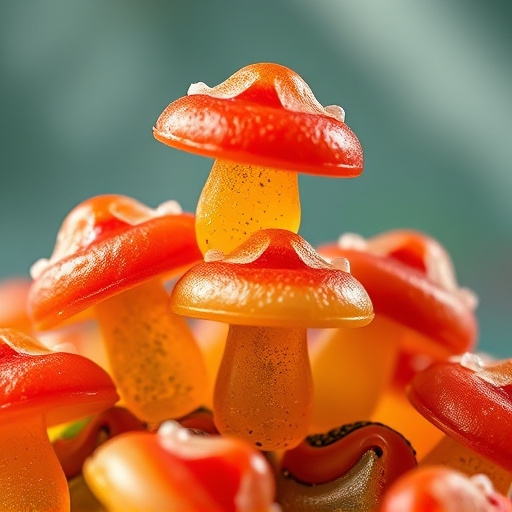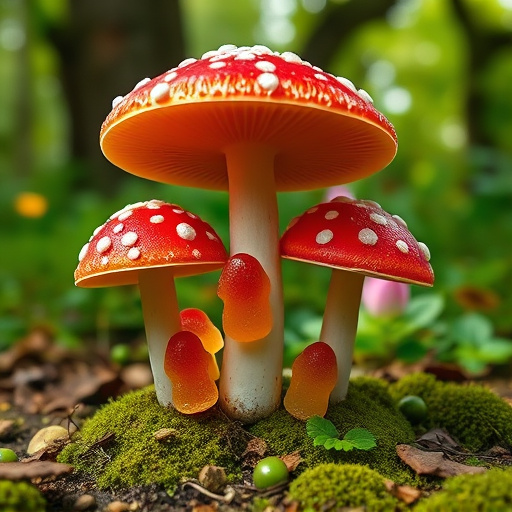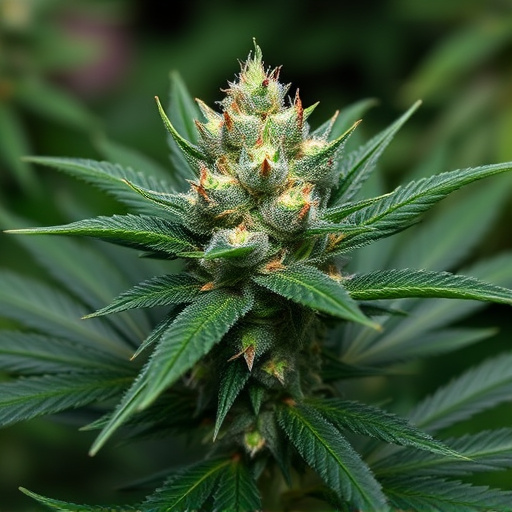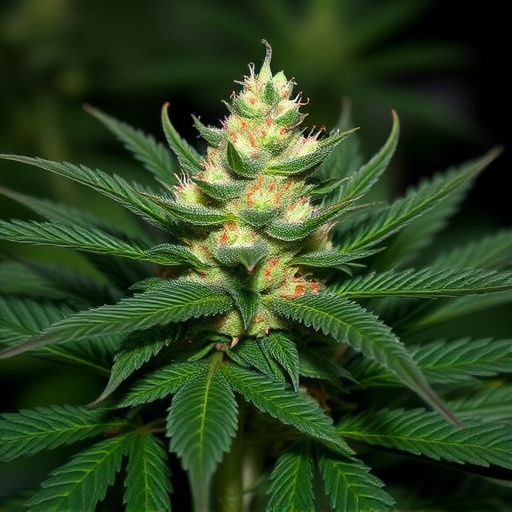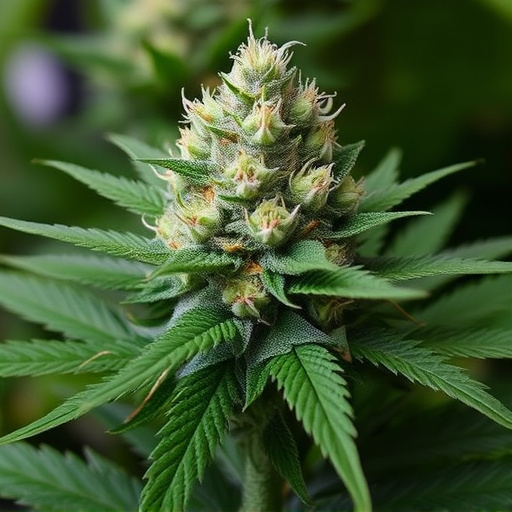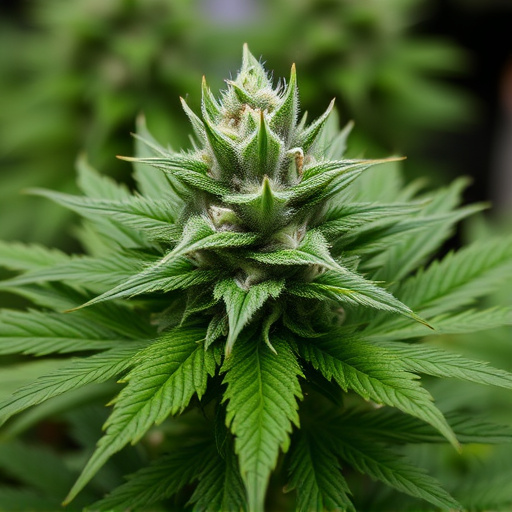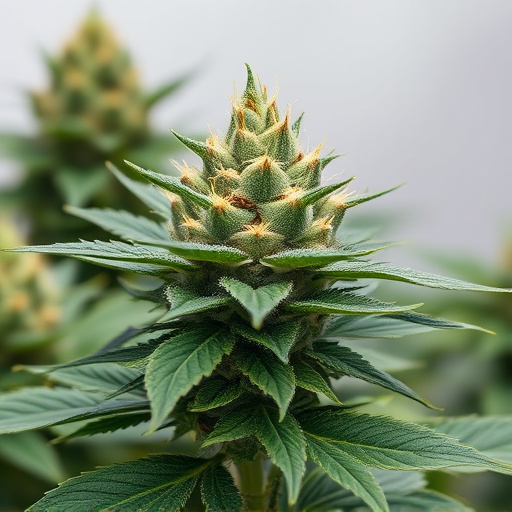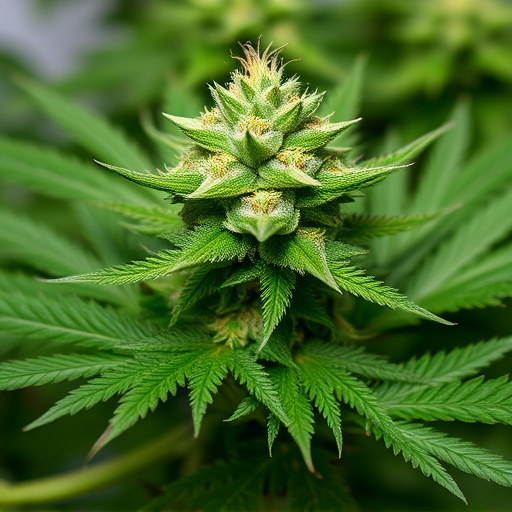THC, the primary compound in cannabis, interacts with the body's endocannabinoid system (ECS) to produce various physiological and psychological effects, including mood changes, memory impacts, and pain modulation. The best hybrid cannabis strains, known for high THC content, offer a blend of indica and sativa traits, providing potent experiences from relaxation to energy. While short-term benefits like heightened senses and increased appetite are backed by studies on these strains, chronic use can lead to disruptions in sleep and cognitive functions, cardiovascular risks, tolerance development, and potential mental health issues in adolescents. Responsible consumption is crucial given the complex interaction of cannabis with natural bodily systems.
“Unraveling the Complexities of High-THC Strains: A Comprehensive Guide
Cannabis enthusiasts and medical professionals alike are intrigued by the powerful effects of high-THC strains. This article delves into the science behind THC and its profound impact on both the body and mind. We explore the physiological and psychoactive effects, including short-term and long-term consequences, as well as potential therapeutic benefits.
Furthermore, we navigate the world of hybrid cannabis strains, focusing on how they balance THC levels to offer specific effects. Discover the optimal choices for managing anxiety, enhancing creativity, or achieving a sense of calm, as we uncover the best hybrid cannabis strains for diverse needs.”
- The Science Behind THC and Its Effects on the Body
- – Understanding THC: What it is and how it interacts with the endocannabinoid system
- – Physiological effects of high-THC strains: Short-term and long-term impacts on various body systems
The Science Behind THC and Its Effects on the Body
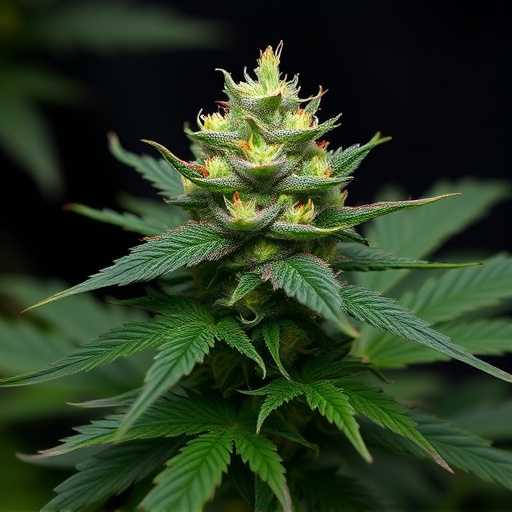
The science behind THC, the primary psychoactive compound in cannabis, reveals its profound impact on both the body and mind. When consumed, THC interacts with our endocannabinoid system (ECS), a complex network of receptors found throughout the brain and body. This interaction leads to various physiological and psychological effects. Research has shown that THC binds to specific receptors, namely CB1 and CB2, influencing processes such as memory, mood, appetite, and pain perception.
Among the many cannabis strains known for their high THC content, best hybrid cannabis strains often offer a balance of indica and sativa traits. These blends can produce potent effects, ranging from relaxing and sedating to energizing and uplifting. Understanding the science behind THC helps us appreciate the diverse experiences these strains can provide.
– Understanding THC: What it is and how it interacts with the endocannabinoid system

THC, or tetrahydrocannabinol, is a key compound found in cannabis plants, responsible for the majority of its psychoactive effects. It interacts with the body’s endocannabinoid system (ECS), a complex network of receptors and enzymes that regulate various physiological processes including mood, memory, appetite, and pain perception. The ECS plays a significant role in maintaining homeostasis, or balance, within the body.
When THC binds to specific receptors in the ECS, it can modulate their activity, leading to the diverse range of effects associated with cannabis consumption. This interaction is what gives rise to the mental and physical changes often experienced by users, including heightened sensory perception, increased relaxation, and altered cognition. Among the best hybrid cannabis strains known for their high THC content are those that have been carefully bred to balance THC levels with other cannabinoids, offering both potent effects and a more controlled experience.
– Physiological effects of high-THC strains: Short-term and long-term impacts on various body systems

High-THC strains, often sought after by cannabis enthusiasts, can have profound physiological effects on the human body. In the short term, these strains may induce heightened sensory experiences, relaxation, and increased appetite—effects well-documented in various studies on best hybrid cannabis strains. The activation of cannabinoid receptors in multiple organ systems leads to changes in heart rate, blood pressure, and breathing patterns, creating a sense of euphoria and reduced anxiety. However, chronic use can result in long-term physiological impacts. Research suggests that high-THC exposure may disrupt the endocannabinoid system’s balance, affecting sleep patterns, cognitive functions, and even contributing to potential cardiovascular risks.
Beyond immediate effects, consistent consumption could lead to tolerance development, requiring higher doses to achieve desired outcomes. This can inadvertently increase the risk of adverse reactions, especially in individuals with pre-existing health conditions. Moreover, some studies hint at potential links between heavy THC use and mental health issues, particularly in adolescents, underscoring the importance of responsible consumption and understanding the complex interplay between cannabis and the body’s natural systems.
High-THC strains, while potent in offering therapeutic benefits for certain conditions, come with a range of physiological effects that can vary greatly among individuals. Understanding how THC interacts with our endocannabinoid system is key to navigating the impacts on both mind and body, especially when considering the diverse profile of top hybrid cannabis strains. Awareness of short-term and long-term effects allows users to make informed decisions, ensuring a safe and effective experience with these potent best hybrid cannabis strains.

